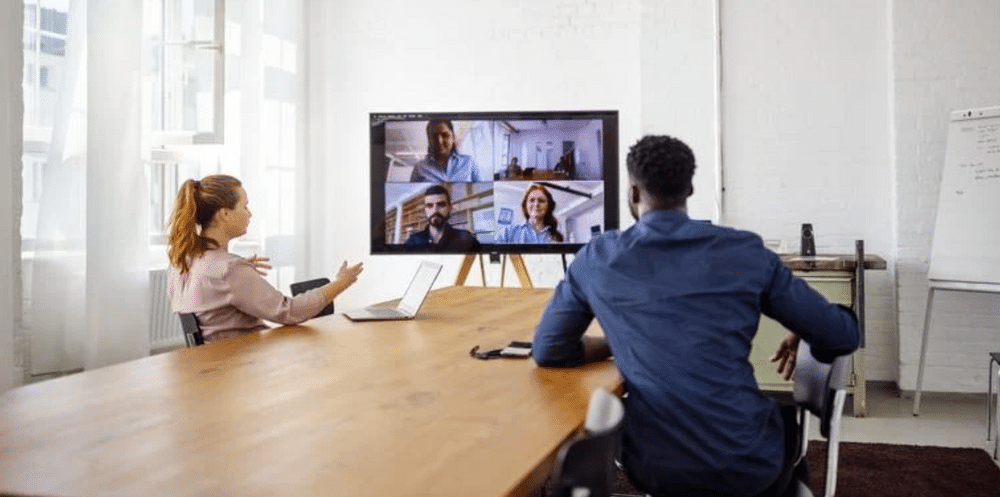The past two weeks have seen a flurry of business press and Twitter feeds on the pros and cons of hybrid working and the opinions of many CEOs. Despite the back and forth, one thing is a certainty. Organizations that provide empathy and clarity to their employees through difficult transitions will be the winners.
The thought leaders who think through these issues and give their employees clear direction and quick answers to their questions will have resilient and loyal employees, whether their choice is hybrid working or back-to-the office or physical workspaces.
As your organization plot its path to returning your people to physical workspaces (smartly and safely) and/or setting up hybrid work teams, the research shows your organization faces this certainty:
The remote work experiment is over, and depending on the research, 70 to 80 percent of home-based workers were more productive than before the pandemic when they were in the office. Why? They spent half of their saved commute time working for the company, and they were not interrupted by loud and crowded open office designs. Did you know it can take an office worker 25 minutes on average to get back into the swing of their work after an interruption? It is true. Think of the business productivity cost of that interruption when it repeatedly occurs every day!
There is plenty of research showing that remote workers (and those workers in hybrid models) are more productive, agile, and innovative than in-office workers. Gartner published a study this year based on the feedback of more than 3,000 professionals. The study found that 75 percent of fully remote workers and 70 percent in a hybrid setting said they (and their teams) were able to adjust to shifting priorities, compared with 64 percent of entirely on-site workers. Remote and hybrid workers also reported in larger numbers feeling comfortable taking risks and testing ideas. However, junior employees and self-described extroverts were more likely than others to say a physical office space was important for learning and brainstorming. New research from Gartner shows that remote workers were also more agile. The learning from this research is that not one shoe fits every company. Organizations that require significant learning from new hires may want to have these workers in the office three to four days a week.
If companies do not allow for some form of hybrid working, they will face high turnover in the weeks and months ahead as employees leave for employers who provide it. Hybrid working is no longer a chill perk. It is an expectation of over half of the office workers, nearly as essential as medical benefits and vacation.
Either returning to the office as before or working from home can work. Here are two checklists on how to proceed, hybrid working or back-to-the office.
Let’s start with hybrid working.
Hybrid working is not an all-or-nothing proposition. Whether an office employee works most of the time from or in the office will depend on the employee’s job duties. If the employee can do most of their work from the office using their computer, access the files they need digitally, and communicate with stakeholders, teammates and the manager by phone, text, email, and video conference, they can work from home two-to-four days a week. Coming into the office one day a week for staff meetings, one-on-ones, group recognition, and important meetings to review new data and make decisions should suffice to keep these employees aligned to the company’s mission, strategies, and goals. For most organizations that have office, research and development, and manufacturing employees, about 45 percent of the workforce can be hybrid workers.
Clarity is essential for goals, milestones, and due dates. Clarity is also necessary for new team operating and communications norms. Does your organization have this clarity?
High doses of digital technology are essential. This includes digital file storage, quick internet, excellent video conferencing technology (and video-conference rooms in the office), and digital intelligent assistants that allow onsite and remote workers to get accurate answers to their questions 24/7.
Manage change well and thoughtfully by using change models such as John Kotter’s 8 step model. Research shows that the companies that lead change well and provide their employees with empathy and clarity and a clear plan for the future enable their employees to be resilient, less stressed, and successful.
Think through redesigning the office now that a large percentage of your workforce will be working in a hybrid model. You will not need all the office space you previously occupied, and what you keep will need to have a new focus and purpose. Many good models exist for a new and exciting office design, such as from The Wall Street Journal, Gartner, and CBRE. You can save operating expenses in reduced real estate costs and shift those dollars to other programs and technologies to support these changes.
If you are calling employees back to the office like before the pandemic, here is your checklist.
Being safe is paramount on employees’ minds. What changes will you implement to keep them safe? As a starting place, here is the CDC’s current guidance and OSHA’s.
Be clear why your organization needs to have everyone working together in the office four or five days a week.
Rethink how to redesign your office to avoid the distractions and loss of productivity of the pre-pandemic office bays (see checklist item number 5 in the hybrid checklist for resources).
As with the hybrid checklist, high doses of digital technology are important. Various generations prefer to interact with intelligent assistants for help to gain immediate support and answers. Digital storage is cost effective, and investing in excellent video conference technology and conference rooms is a must.
MeBeBot is an essential technology for hybrid working and back-to-the-office. Our AI-powered chatbot for HR, IT, and Operations provides employees around the globe with automated accurate answers to their questions 24/7. MeBeBot's Intelligent Assistant improves the performance of your operations by generating an ROI of $250K to $1M in the first year, depending on the size of your company. Our solution installs in 30 minutes, and you can be up and running, by simply editing our knowledge base of over 250 FAQs, training using Natural Language Processing (NLP) with our proprietary AI data model . And, with MeBeBot's dashboard, displaying real time usage data, you can keep your finger on the pulse of your employees, so that you can monitor and respond to their needs and encourage engagement.
Please don’t take our word for it. Check out the successful case studies of our customers.
Are you read for the new world of work? Sign up for a demo today

 If you are calling employees back to the office like before the pandemic, here is your checklist.
If you are calling employees back to the office like before the pandemic, here is your checklist. 